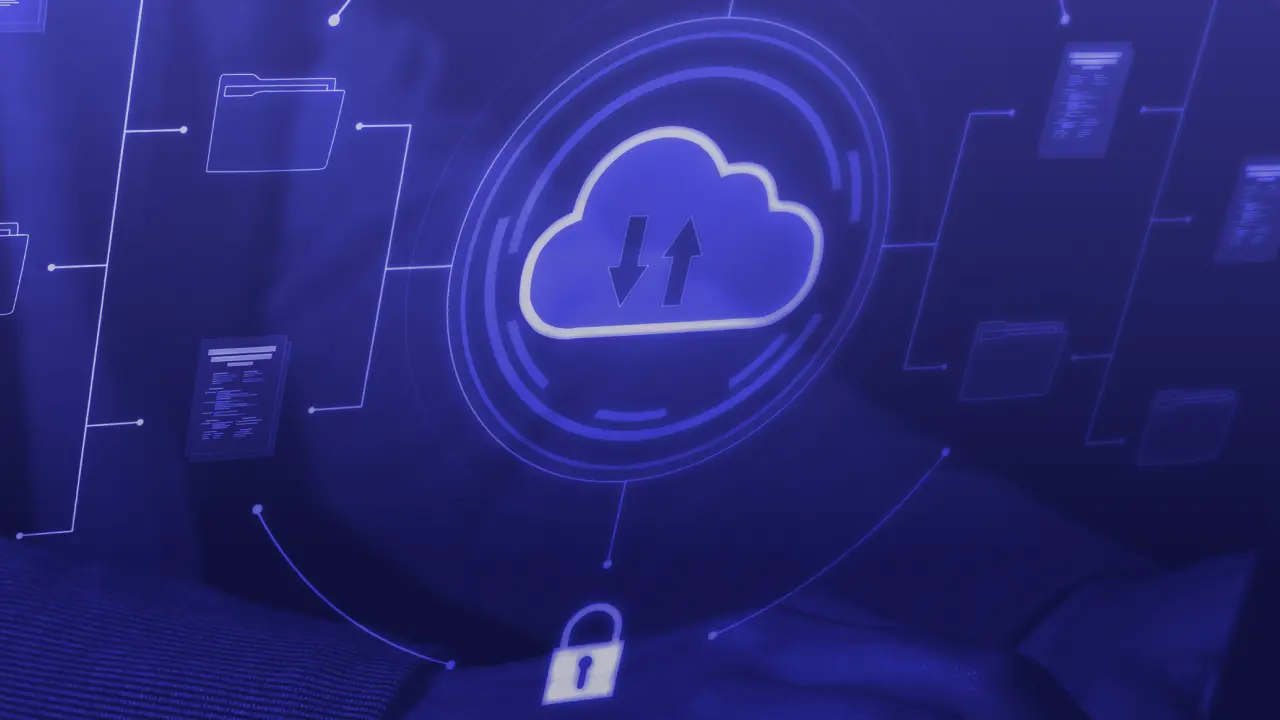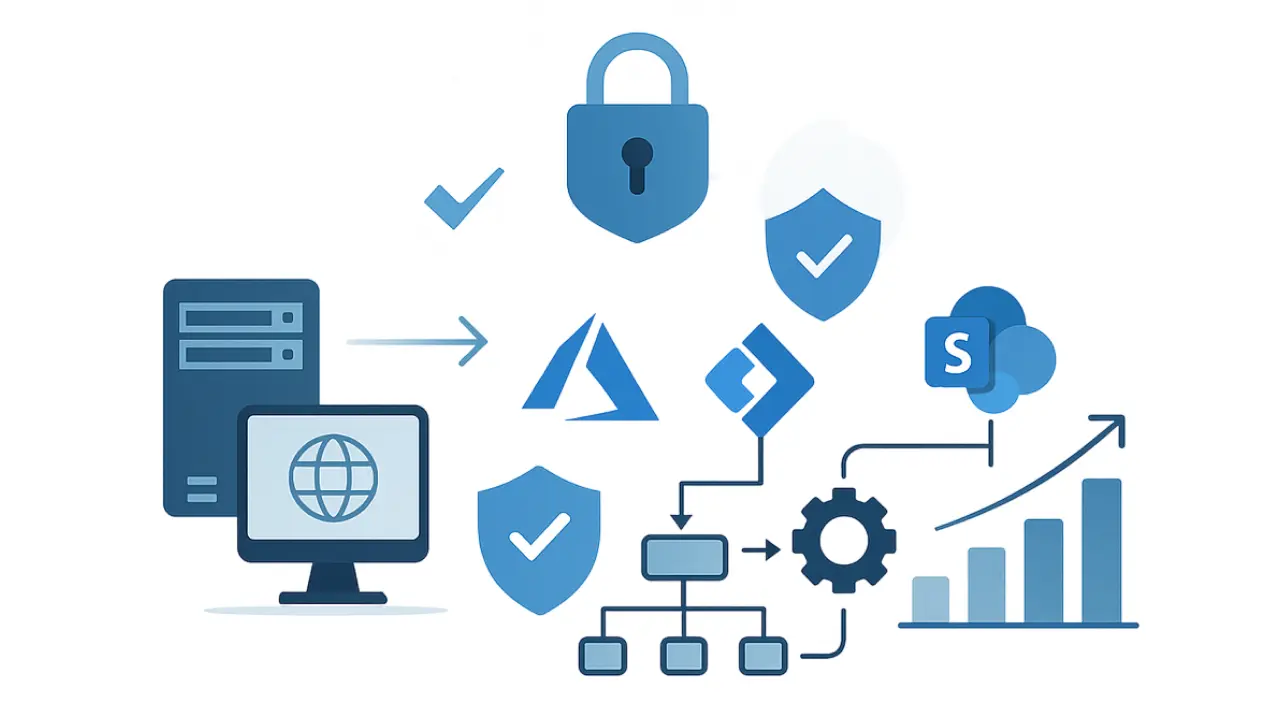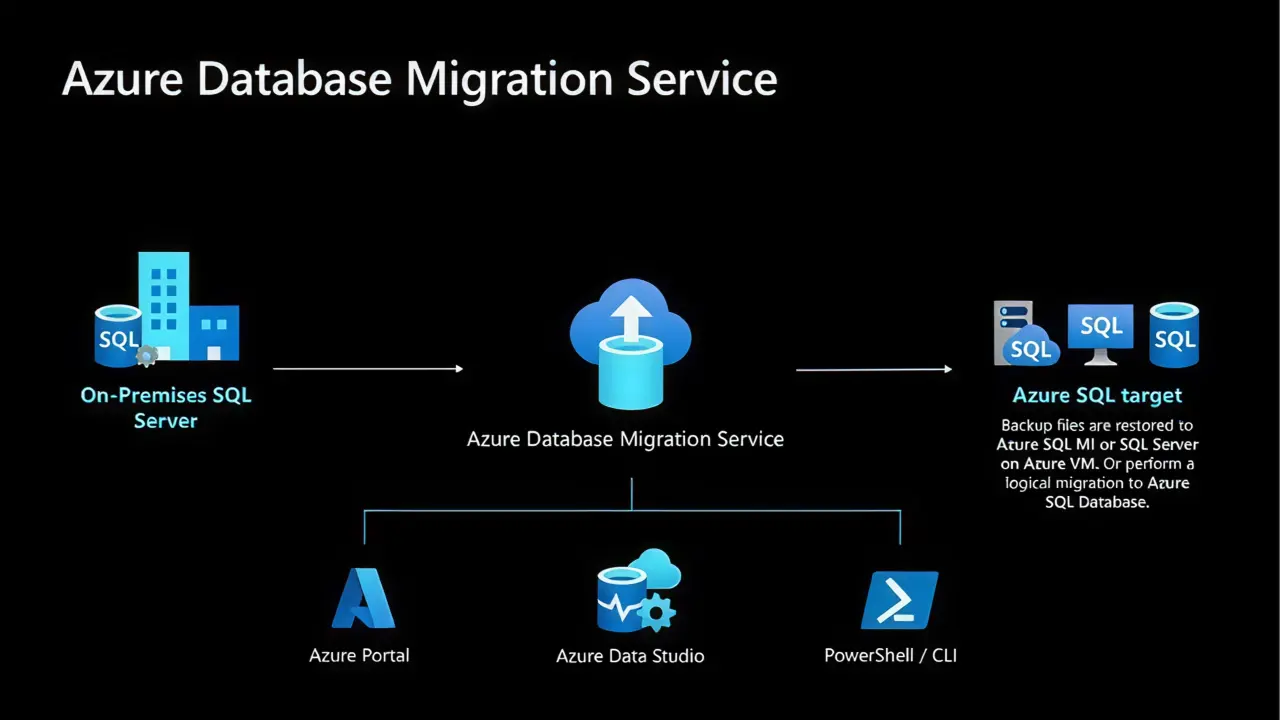
Cloud transformation is no longer a future goal—it’s a present imperative. As organizations race to modernize, the question isn’t “if” you’ll move to the cloud, but “how well” you’ll do it.
According to the International Data Corporation (IDC), global spending on digital transformation is expected to reach $3.9 trillion by 2027, with cloud modernization leading the charge.
This month, we spotlight how Microsoft is simplifying modernization with powerful new tools and AI-driven insights. From SQL Server migrations made seamless in SSMS 21, to GPT-powered Copilot for Oracle-to-SQL conversions, and intelligent Elastic Pool recommendations via CLI. Cloud migration is becoming smarter, faster, and more cost-effective.
RMM tools have become high-value targets and becoming a hot bed allowing attackers to pivot across entire networks once they breach a single RMM platform. Meanwhile, SharePoint’s evolution continues to impress, offering AI-infused compliance and governance capabilities that pave the way for a secure Copilot rollout.
Whether you're optimizing infrastructure or scaling app modernization, this newsletter delivers the insights to help you modernize with purpose. Let's dive in 👇

We’re helping more organizations move beyond lift-and-shift by modernizing their cloud migration playbooks—focusing on governance, security, and long-term agility.
Whether you're migrating legacy intranets or modernizing app infrastructure, our approach ensures every workload is optimized for performance and compliance. From SharePoint to Azure, we’re enabling teams to migrate with confidence, reduce rework, and accelerate ROI. It’s not just about moving to the cloud—it’s about moving smart.
If you’re navigating complex environments or planning your next wave of modernization, we’re here to help you get it right the first time.
Delve into modern SharePoint capabilities. Secure document management, compliance tools, and governance controls that power modern intranets and digital workplaces in the cloud.

Learn how to effectively manage content in SharePoint, accelerate and improve your implementation of Data Loss Prevention (DLP) and sensitivity labels, and align these efforts to boost your Microsoft 365 Copilot adoption—all while reinforcing security, compliance, and management across your organization.
Meet the Speakers 🗣️
Richard Harbridge, Microsoft MVP
Vlad Catrinescu, Technology Evangelist at Syskit & Microsoft MVP
Key Takeaways 💡
👉 Download the on-demand webinar here!
LATEST NEWS

Optimizing cost and scalability is at the heart of any cloud migration, and now Azure Data Migration Service automation will recommend Azure SQL Database Elastic Pools for you right from your PowerShell or CLI commands.
Available via both Azure PowerShell and Azure CLI without any changes to your existing commands—you’ll get tailored Elastic Pool suggestions to optimize resource utilization, reduce costs, and simplify management across multiple databases.
Microsoft has just made it easier than ever to upgrade and migrate your SQL Server instances with the new migration component built directly into SQL Server Management Studio (SSMS) 21.
This extension brings assessment and migration capabilities—such as compatibility checks for breaking changes, feature‐parity analysis, and a backup‐copy‐restore engine—straight into the SSMS UI, so DBAs can plan and execute side-by-side migrations without switching tools.
Tackling heterogeneous migrations just got a lot smarter: the preview of Copilot in SQL Server Migration Assistant (SSMA) brings GPT-powered assistance to Oracle PL/SQL to T-SQL conversions.
Beyond SSMA’s rule engine, this AI copilot leverages models like GPT-4o and o4-mini to understand complex PL/SQL logic, offer contextual rewrites, and explain its reasoning, so you can validate changes side-by-side and tailor prompts to your organization’s naming conventions and business rules. Whether you’re migrating dozens of legacy procedures or a handful of critical workloads, this Copilot accelerates conversions while giving you confidence in every transformation.
LATEST NEWS

Taming JVM tuning headaches is a major stepping-stone on the path to true cloud-native Java, and the new Azure Command Launcher brings intelligent defaults and diagnostic hooks to your fingertips.
This tool wraps common JVM parameters and Azure environment variables into a single launcher script, automatically applying GC settings, memory limits, and logging configuration optimized for your App Service or Kubernetes deployments. By offloading boilerplate configuration, your developers can focus on code improvements and accelerate time-to-value for every Java workload you move to Azure.
Moving your Model-Driven Communication Protocol (MCP) servers into Azure App Service just got more flexible: this update adds sample projects for Node.js and Python, plus built-in authentication flows via Azure AD.
You’ll learn how to spin up MCP endpoints using the same App Service plans you use for your web apps, plug in OAuth flows for secure token exchange, and deploy multi-language demos in minutes. For teams standardizing on PaaS and seeking a frictionless way to host remote agents, these new samples streamline both onboarding and CI/CD integration.
Bringing your API Management gateways into Azure Container Apps means you can now run fully containerized APIM instances without managing underlying infrastructure—while still enforcing secure VNet isolation.
This post walks you through deploying self-hosted gateways in ACA, configuring VNet integration for private back-end access, and leveraging ACA’s built-in auto-scale to handle traffic spikes effortlessly. If you’re modernizing legacy API workloads or looking to decouple your gateway layer, this guide shows how to reduce operational overhead and improve security posture in one seamless, serverless platform.
LATEST NEWS

People power is at the heart of effective SecOps. In this overview, Microsoft lifts the curtain on Defender Experts for XDR through a video series hosted by Sachin Kumar and Edward Walton, showcasing how their global team of analysts, threat intelligence leads, and ML specialists collaborate to detect, hunt, and neutralize threats around the clock.
Whether you’re evaluating MXDR services or looking to inspire your own SOC with best practices in AI-driven detection and human expertise, these episodes offer practical insights straight from the front lines.
Not all extended detection services are created equal. This guide helps you map your security maturity and resource footprint to the right Microsoft offering: opt for Defender Experts for Hunting if you already run a robust SOC and need targeted, proactive threat-hunting across endpoints, cloud apps, and identity; choose Defender Experts for XDR when you seek a fully managed, 24/7 SOC-like experience that covers detection, investigation, and automated response across the entire Defender ecosystem.
Each section breaks down capabilities, ideal use cases, and a side-by-side comparison to help you align on-premises needs with cloud-native protection.
Remote Monitoring and Management (RMM) tools, prized for seamless IT operations, have become high-value targets—allowing attackers to pivot across entire networks once they breach a single RMM platform.
Drawing on incidents observed by Microsoft Defender Experts from January 2024 through early 2025, this deep-dive unpacks zero-day flaws in ConnectWise ScreenConnect, BeyondTrust Remote Support, and SimpleHelp that adversaries weaponized for credential theft, lateral movement, and ransomware staging. Real-world case studies—from public sector to higher education—illustrate shifting tradecraft and reinforce critical mitigations: timely patching, strict network segmentation, and EDR block mode.
Join Our Mailing List